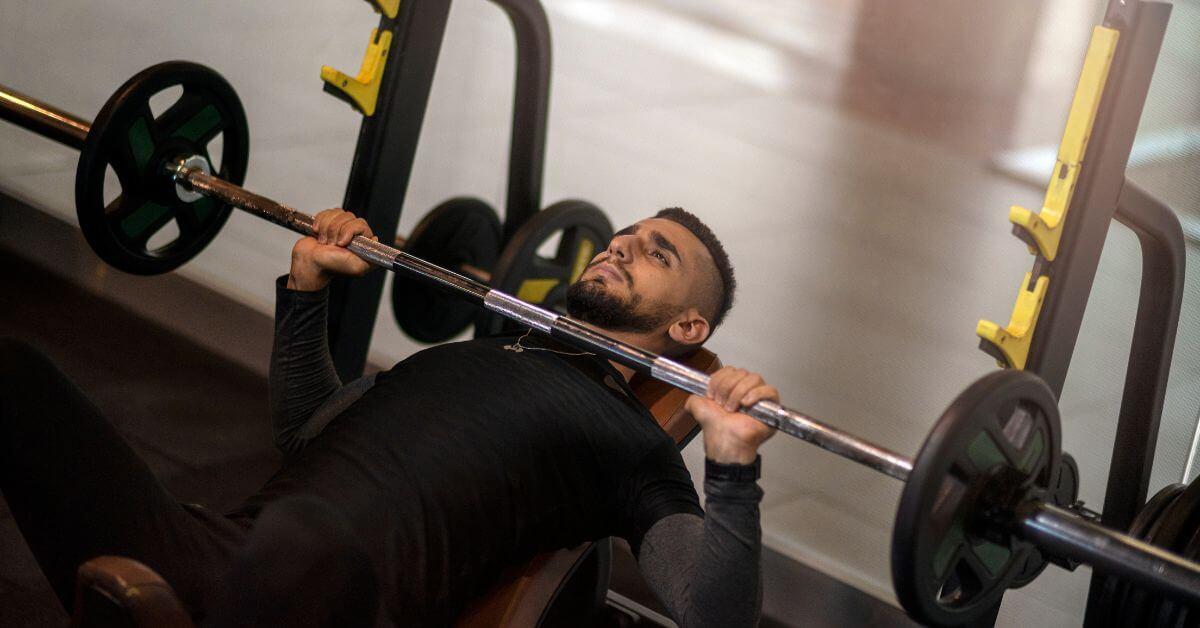Functional chest exercises are essential to increase your general fitness level or performance in a particular sport or activity. Incorporating chest functional exercises can significantly enhance your upper body strength and overall athletic performance.
Table of Contents
ToggleThese exercises target several muscle groups, enhance balance, coordination, and stability, and help you develop a more muscular and sculpted chest. Dynamic chest exercises like plyometric push-ups and medicine ball throws are great examples.
Functional chest exercises benefit anybody trying to increase their strength and performance, regardless of whether they are a novice just getting started or a professional athlete looking to step up their game. Utilizing functional trainer chest exercises can be particularly beneficial for targeted muscle development.
This blog post will discuss some of the best functional chest exercises you can include in your functional training regimen, including the best functional workouts for comprehensive upper body strength.
Start Building Your Dream Body Today
Ready to elevate your fitness game without falling into the trap of dull, repetitive routines that just don’t deliver? Imagine sculpting your ideal physique and boosting your health, all while still enjoying life’s pleasures, like those irresistible weekend getaways and your aunt’s legendary cheesecake. With our online fitness and nutrition coaching service, you don’t have to compromise. Dive into a personalized fitness journey that blends perfectly with your lifestyle, not against it. Book your completely free discovery consultation today, and take the first step towards a transformation that doesn’t require giving up the joys of life.

“I was skeptical about online fitness coaching, but Functional Body Savage completely changed my perspective. Vanja and Radomir’s personalized approach and attention to detail have helped me achieve goals I never thought possible. I’m stronger, more confident, and grateful for their guidance.”
Emily Thompson, San Francisco, CA
Learn More About Our Online Coaching ServiceQuick Summary
- Functional chest exercises are essential for increasing chest strength through a comprehensive functional training program.
- The pectoral muscles consist of the pectoralis major and minor, which control arm movements and support the shoulder blade.
- A mix of compound and isolation exercises and a well-balanced, high-protein diet is recommended to build defined chest muscles.
- Some exercises include dumbbell bench presses, plyometric chest press-ups, medicine ball shot puts, medicine ball push-ups, dips, single-arm dumbbell bench presses, and resistance band push-ups.
Functional Chest Workout Exercises
Every comprehensive functional training program must include functional chest exercises.
These exercises strengthen, stabilize, and coordinate the body using several muscle groups.
In this section, we’ll discuss several efficient functional chest exercises that you may include in your training regimen to develop a more muscular, more defined chest and increase overall upper body strength [1].
1. Dumbbell Bench Press
The dumbbell bench press is a well-liked chest strength training exercise for developing chest, shoulders, and triceps strength and muscle.
Dumbbells have a more comprehensive range of motion than a barbell, which can aid in recruiting more muscle fibers and increase overall strength.
This is one advantage of utilizing dumbbells for this workout.
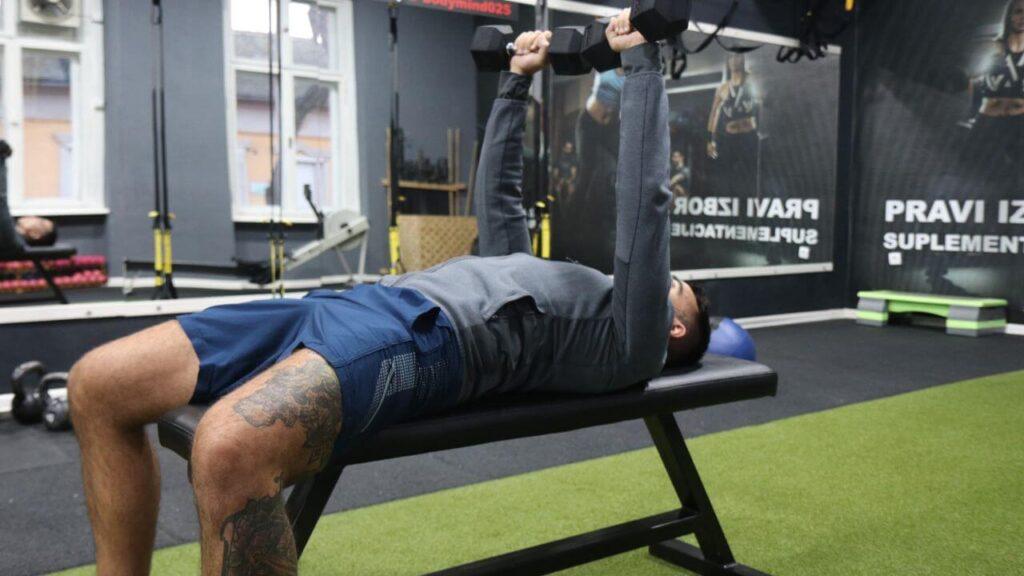
How to Perform Dumbbell Bench Press
- You need to lie flat on your back on a bench and grab a pair of dumbbells and hold them on your hips.
- While engaging your core and glutes, lift the dumbbells above your chest.
- Your palms should be facing forward. Rotate your shoulders outward to engage your lats.
- Then, lower the dumbbells to your chest and press them back up.
2. Plyometric Chest Press UPS
An advanced push-up exercise that uses explosive force and speed is the plyometric chest press-up. This chest explosive workout is perfect for developing power and strength simultaneously.
This activity is a plyometric movement that focuses on the chest, triceps, and shoulders while also enhancing cardiovascular endurance. Such explosive chest workouts are essential for athletes seeking to improve their performance.
Remembering that plyometric exercises, like the plyometric chest press-up, may be exceedingly difficult and raise the risk of injury if performed improperly.
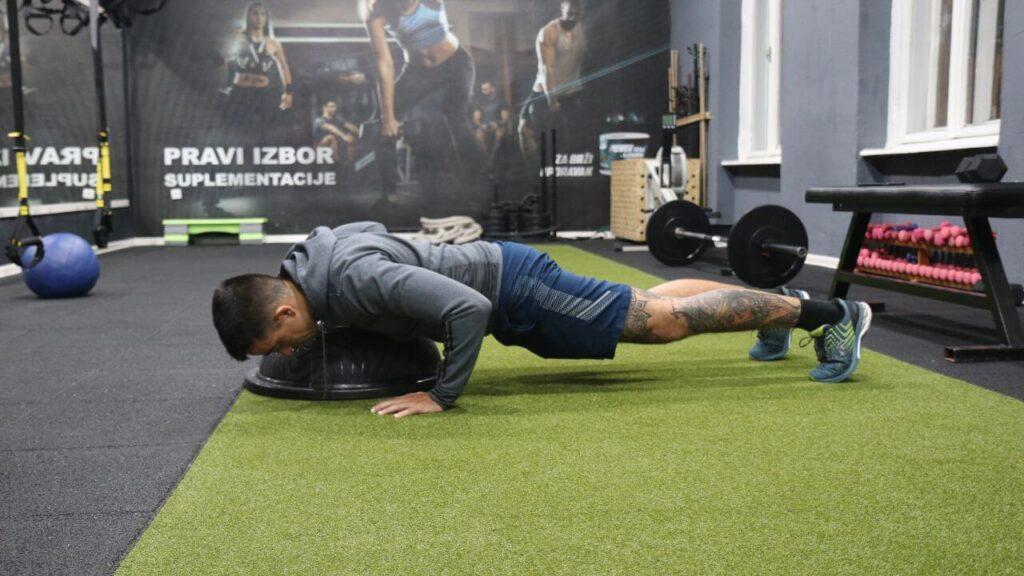
How to Perform Plyometric Chest Press-Ups
- Start in a high plank or at the top of the pushup position. Your torso should be straight, your core engaged, and your palms under your shoulders.
- Start to lower your body as if you’re going to do a push up until your chest almost touches the floor.
- As you push up, do so with enough force for your hands to leave the ground. You can clap your hands together for added difficulty, but this is optional.
- Land lightly on the ground, moving into your next rep immediately.
3. Medicine Ball Shot Puts
Exercises like medicine ball shot puts can assist in developing the core, legs, and shoulders’ explosive strength. These are excellent plyometric chest exercises that mimic real-life dynamic movements.
It is a plyometric activity that closely resembles the shot put throwing motion.
The medicine ball shot put toss unilaterally and explosively works the shoulders, triceps, and chest.
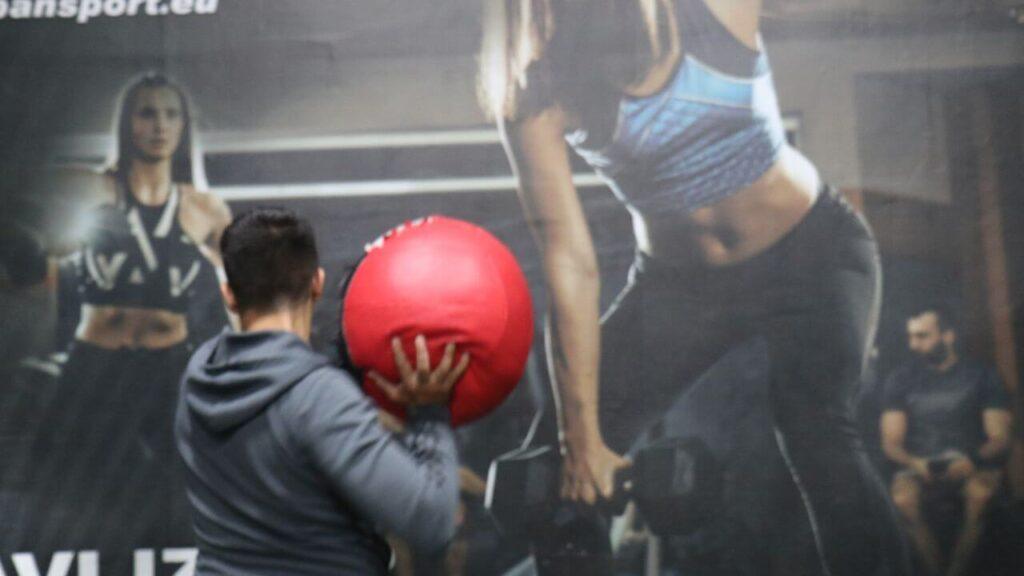
How to Perform Medicine Ball Shot Puts
- Set up in an athletic base position while holding a medicine ball with the back elbow high at your back shoulder.
- Step behind the front foot and drive off the back leg.
- As you reacquire your athletic base position, load into the trail hip and rotate your shoulders back.
- Explode through the hips as you throw the medicine ball into a wall.
4. Medicine Ball Push-Ups
A medicine ball or stability ball executes medicine ball push-ups, an advanced bodyweight exercise.
A straightforward approach to increase the difficulty of a well-known bodyweight exercise is to perform medicine ball push-ups. They are considered some of the best functional exercises for chest enhancement.
It stimulates the same chest, triceps, shoulders, upper back, and core muscles as a push-up.
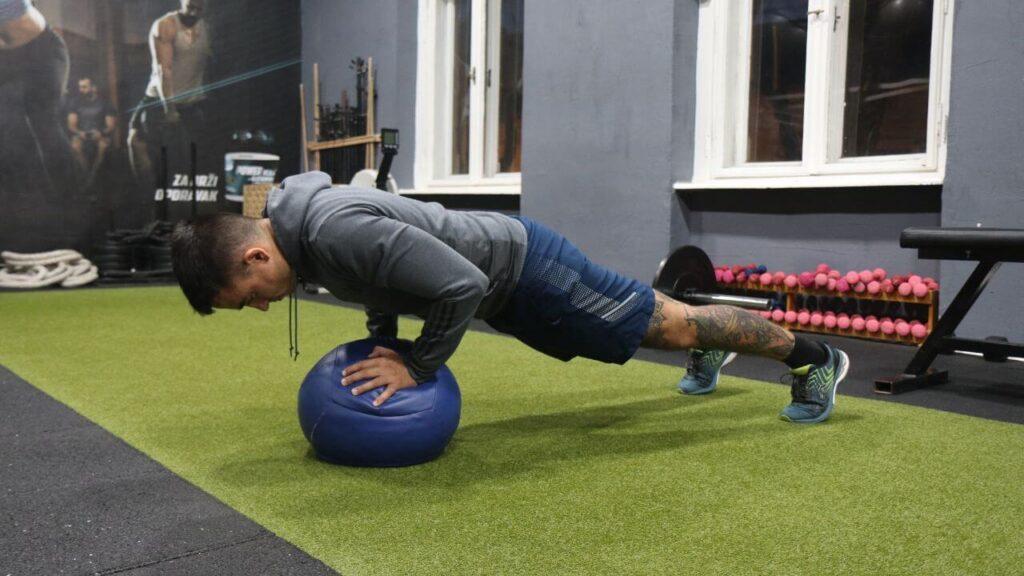
How to Perform Medicine Ball Push-Ups
- Start in a high plank position with your hands on the medicine ball.
- Lower your body to the ball, keeping your elbows close to your sides.
- Push back up to the starting position.
5. Dips
Dips are a bodyweight exercise that mainly targets the triceps and chest while also working the shoulders and core. Incorporating them into your chest and tricep workout can yield great results.
These entail lowering your body and then pushing with your arms to raise it again.
You may perform them using a dip machine, parallel bars, or two strong chairs.
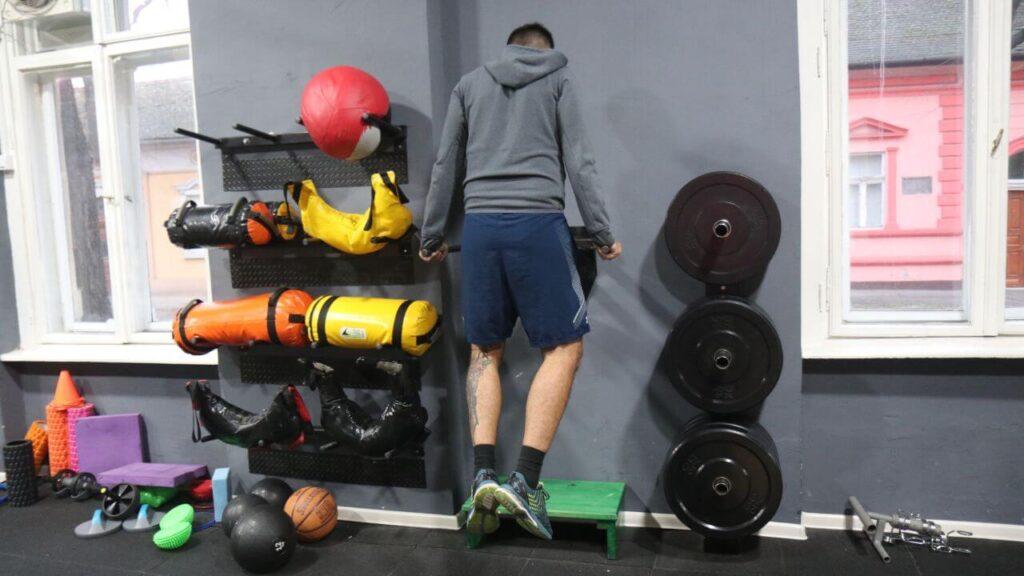
How to Perform Dips
- Stand between two parallel bars.
- Place your hands on the bars and lift yourself.
- Lower yourself down until your arms are at a 90-degree angle.
- Push yourself back up to the starting position.
6. Single-Arm Dumbbell Bench Press
The single-arm dumbbell bench press is a variation of the dumbbell bench press in which you press one arm overhead at a time.
While including the core and enhancing balance and stability, this exercise primarily targets the chest, shoulders, and triceps.
The single-arm dumbbell bench press is a fantastic way to improve pressing technique while using less weight than a conventional dumbbell bench press.
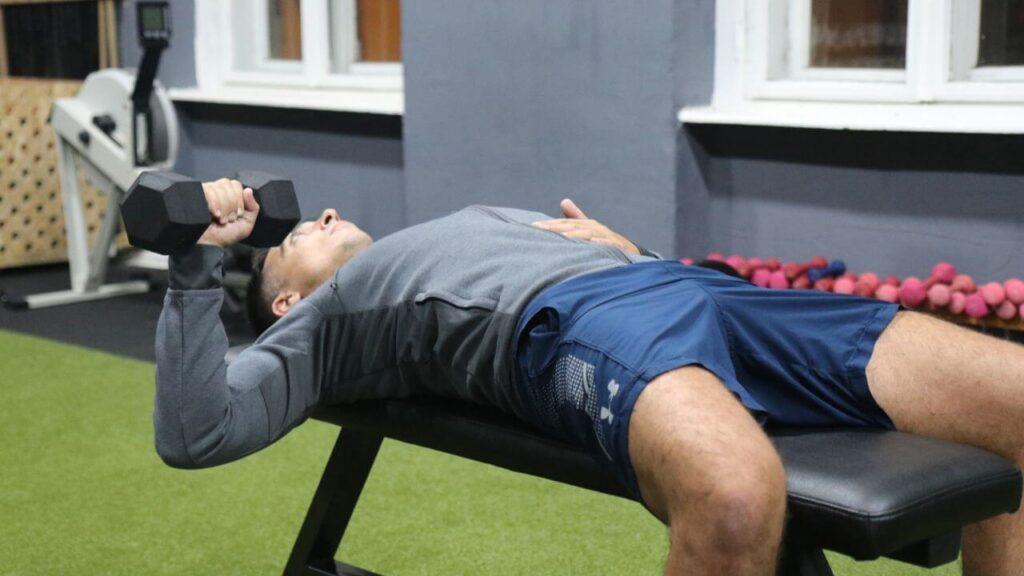
How to Perform Single-Arm Dumbbell Bench Press
- Sit down on a flat bench with one dumbbell resting on your thigh.
- Kick the weight to the shoulder and lie back, positioning the dumbbell to the side of your chest with the forearm and upper arm, forming a 90-degree angle under the dumbbell.
- Press the dumbbell up until your arm is fully extended.
- Lower the dumbbell back down to the starting position.
7. Resistance Band Push-Ups
Resistance band push-ups are a more challenging variation of standard push-ups since the bands add more resistance.
As a result, they are superior to push-ups without bands in terms of developing muscle and strength.
While including the core and enhancing balance and stability, this exercise primarily targets the chest, shoulders, and triceps.
Resistance band push-ups are an excellent method to add diversity and difficulty to a training regimen for fitness lovers who have previously mastered the standard push-up.
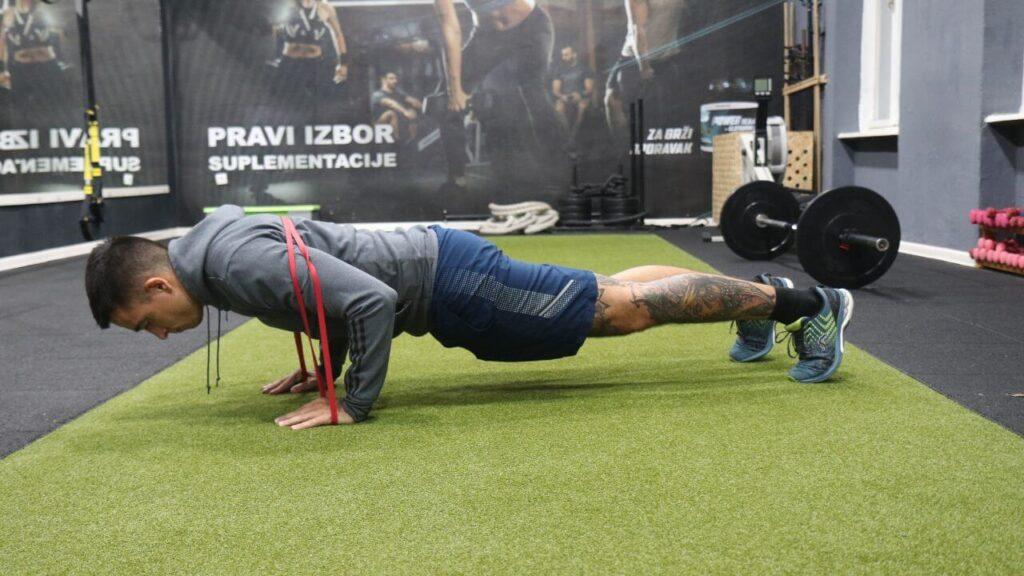
How to Perform Resistance Band Push-Ups
- Hold a resistance band with both hands and place it at the bottom of your shoulder blades.
- Get into the push up position.
- Lower your chest towards the floor. Elbows should point backward and make a 45-degree angle while lowering down.
- Now push back up to the starting position.
Expert Shares His Top Chest Exercises for Maximum Gains
In a YouTube video, Jeff Nippard, a pro natural bodybuilder, powerlifter, and science communicator to over 2 million YouTube subscribers, discusses his top chest exercises and provides valuable insights into optimizing your chest workouts:
“Number 10 on my list is the AMRAP push-up, where AMRAP stands for as many reps as possible. The main upside of the AMRAP push-up is that it’s so accessible—all you need is your own body weight. I usually use them as a finisher at the end of a workout to burn the pecs out in a more metabolic capacity. However, because I have to do so many reps to get to muscular failure, like 50 reps or more, I do find that they’re a bit too cardio-intensive for me. I’ll usually get to rep 20 or 30 before I start to feel my chest at all, which is essentially wasted energy as far as muscle building is concerned. Regardless, the main thing to keep in mind is that you should go all the way to failure; otherwise, you do risk leaving your pecs under-stimulated from the low loading.”
What Is the Most Functional Chest Exercise?
The push-up is frequently regarded as the most efficient and helpful chest exercise.
Push-ups are a full-body workout since they work the shoulders, triceps, core, and chest muscles.
Moreover, push-ups may be altered to match various fitness levels and objectives, making them flexible and open-ended activities for everybody.
It’s crucial to select workouts appropriate for your body and fitness level and concentrate on good technique and steady improvement.
Increase your general fitness and athleticism while also developing strong chest muscles by including a range of functional chest exercises in your training program.
What Are the Muscles of the Chest?
The pectoral or chest muscles are a sizable muscular group in the upper torso. The two primary muscle groups that comprise the pectoral muscles are the pectoralis major and minor.
The pectoralis major, the bigger of the two muscles, is situated in the front of the chest.
It comprises the sternal and clavicular heads (upper chest) (and lower chest).
Arm flexion, adduction, and internal rotation are just a few of the actions the pectoralis major controls.
Located below the pectoralis major, the pectoralis minor is a smaller muscle.
It also supports the scapula (shoulder blade) during upper body motions and engages in arm movements.
Tips for Defined Chest Muscles
You can reach your goals by following a few recommendations to build specific chest muscles.
First and foremost, it’s crucial to concentrate on a mix of compound and isolation workouts.
Push-ups and bench presses are compound workouts that engage many muscle groups simultaneously and can increase your overall strength and size.
Exercises that isolate a particular part of the chest, such as cable crossovers and chest flies, can help you build more defined chest muscles.
Diet has a significant role in establishing developed chest muscles, in addition to exercise.
After practicing, eating a well-balanced, high-protein diet can aid in your muscles’ growth and recovery [2].
Ultimately, switching up your routines and pushing yourself via progressive overload is critical.
Maintaining building muscle and avoiding plateauing entails progressively raising the weight or level of difficulty of your activities over time.
Maintaining consistency is essential, so commit to a regular exercise schedule and exercise patience; building well-defined chest muscles takes time and effort.
How Should You Eat if Chest Definition Is Your Goal?
It’s critical to pay attention to your nutrition if you want to improve your chest definition. For muscle growth and post-workout recovery, it’s essential to consume a well-balanced diet rich in protein.
Strive to eat 1 gram of protein per pound of body weight each day.
Lean meats, poultry, fish, eggs, dairy products, and plant-based forms of protein, including beans, lentils, and tofu, are all excellent protein sources [3].
To fuel your exercises and promote muscle growth, eating complex carbs and healthy fats is crucial.
Complex carbs found in whole grains, fruits, and vegetables provide long-lasting energy for exercise [4].
Inflammation can be reduced, and general health can be supported by consuming healthy fats such as those in nuts, seeds, avocados, and fatty fish [5].
Lastly, remember to remain hydrated by sipping water often throughout the day.
Muscle function and rehabilitation depend on proper hydration.
Functional Warm Up
Whether you’re a novice or a professional athlete, a functional warm-up is essential to every training regimen.
Dynamic motions and functional movements in this warm-up help your body prepare for activity by boosting blood flow, warming up your muscles, and enhancing joint mobility.
Unlike static stretching, which includes holding a stretch for a long time, dynamic motions and functional exercises entail actively moving your body through a range of motion.
Lunges, squats, arm circles, and inchworms are a few examples of dynamic exercises frequently used in a functional warm-up.
These motions energize your entire body and prepare it for more strenuous activity and warming up specific muscles [6].
Before exercising, spend some time warming up correctly to help avoid injuries like muscle strains and joint sprains.
Functional Chest Workout
In this section we will present you an example of a functional chest workout:
Exercise #1: Push-ups
Sets: 3
Repetitions: 10-15
Exercise #2: Dumbbell bench press
Sets: 3
Repetitions: 8-12
Exercise #3: Plyometric push-ups
Sets: 3
Repetitions: 8-12
Exercise #4: Standing cable fly
Sets: 3
Repetitions: 12-15
Exercise #5: Incline dumbbell press
Sets: 3
Repetitions: 10-12
Related Articles:
- 15 Functional Shoulder Exercises for Strength & Mobility
- 10 Functional Arm Exercises for Size & Performance
- 10 Best Functional Upper Body Exercises for Strength
FAQs
Is Chest Press a Functional Exercise?
Yes, the chest press is a classic upper-body functional exercise that works your chest, shoulders, and triceps.
What Are Functional Exercises in Gym?
Functional exercises are movements that mimic everyday activities or specific sports movements. Some examples include squats, lunges, deadlifts, push-ups, pull-ups, and twisting. Adding functional exercises for chest can significantly improve your upper body strength and performance.
Are Bench Presses Functional?
Yes, the bench presses are one of the most functional exercises that help you more easily perform daily activities that require pushing or carrying.
Why Do Athletes Not Bench Press?
Certain athletes do not bench press because certain movement patterns or deficiencies may make the bench press a less safe option for some athletes.
Are Push Ups More Functional Than Bench Press?
Yes, pushups and their numerous versions are more functional in both sports and daily life. You must always use force to push your torso off the ground while getting up from a seated or reclining posture.
What Equipment Should I Use to Build Functional Chest Strength?
To build functional chest strength, you should use free weights.
Free weights such as barbells, dumbbells, and kettlebells are the best equipment for building a strong and resilient chest.
Read our guide on the best functional training equipment for 2024 to pick the best high-quality equipment to build a big and strong chest.
In the comments below, let me know which functional chest exercise is your favorite and why.
Start Building Your Dream Body Today
Ready to elevate your fitness game without falling into the trap of dull, repetitive routines that just don’t deliver? Imagine sculpting your ideal physique and boosting your health, all while still enjoying life’s pleasures, like those irresistible weekend getaways and your aunt’s legendary cheesecake. With our online fitness and nutrition coaching service, you don’t have to compromise. Dive into a personalized fitness journey that blends perfectly with your lifestyle, not against it. Book your completely free discovery consultation today, and take the first step towards a transformation that doesn’t require giving up the joys of life.

“I was skeptical about online fitness coaching, but Functional Body Savage completely changed my perspective. Vanja and Radomir’s personalized approach and attention to detail have helped me achieve goals I never thought possible. I’m stronger, more confident, and grateful for their guidance.”
Emily Thompson, San Francisco, CA
Learn More About Our Online Coaching ServiceReferences:
- https://www.ncbi.nlm.nih.gov/pmc/articles/PMC8877248/
- https://www.ncbi.nlm.nih.gov/pmc/articles/PMC7909540/
- https://www.ncbi.nlm.nih.gov/pmc/articles/PMC5852756/
- https://www.ncbi.nlm.nih.gov/pmc/articles/PMC3850644/
- https://pubmed.ncbi.nlm.nih.gov/8947430/
- https://bjsm.bmj.com/content/49/14/935

